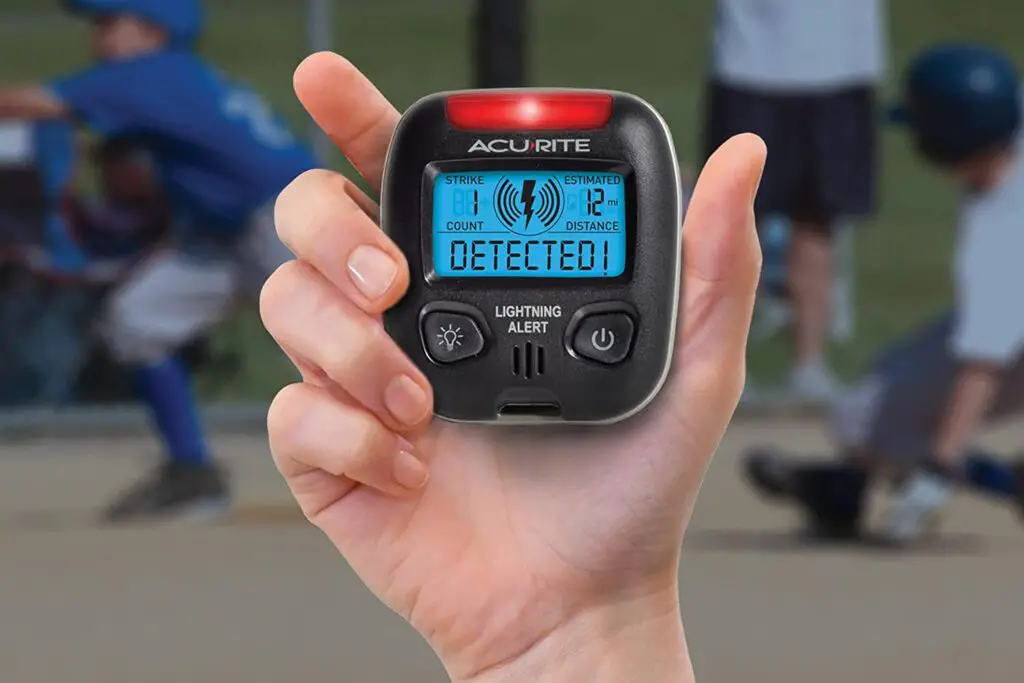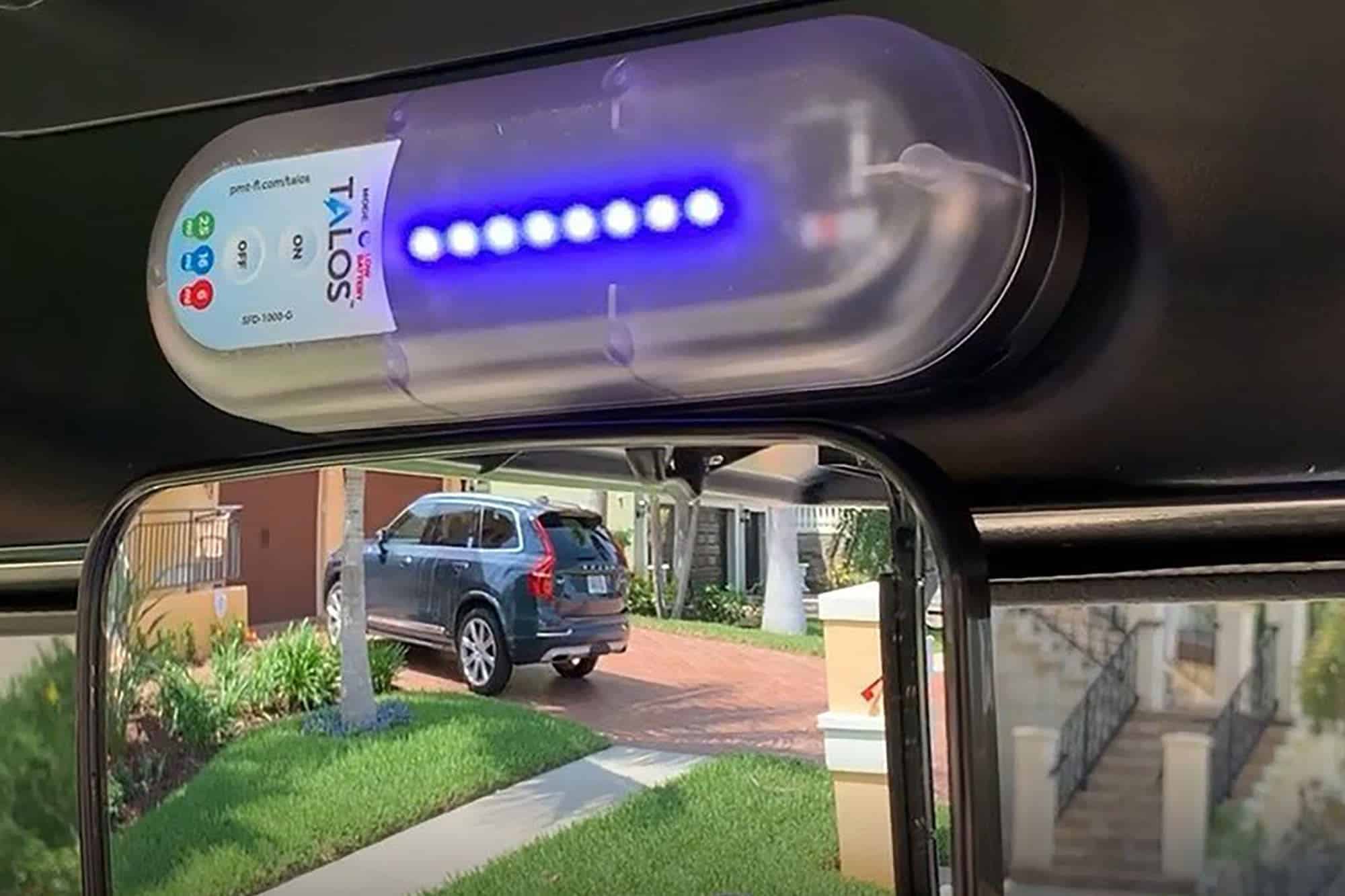Have you ever wondered how lightning forms? Have you thought about how meteorologists can detect lightning? Lightning is a mysterious phenomenon in weather prediction; it is impossible to predict accurately but can be tracked with a lightning detector. Lightning strikes occur thousands of times a day, and these devices provide earlier warnings for severe storms, making lightning detection equipment a helpful tool. Curious about how lightning detectors work? We’ll answer that in this article.
Weather forecasters can predict the likelihood of a storm with heavy lightning. Unfortunately, individual lightning strikes are currently impossible to forecast, and the strikes are seemingly random and occur too quickly and frequently to predict. The lightning flash is our only warning, except for the buildup of static electricity that sometimes precedes a strike.
What is lightning?
Lightning is a powerful electric bolt. Lightning occurs when there is a difference in the electrical charge in a thunderstorm cloud. The negatively charged particles move to the bottom of the cloud, drawn to the positively charged particles in the ground—cloud-to-ground lightning channels electrons from the cloud to the ground, balancing the charge. Cloud-to-cloud lightning happens much in the same way, except this happens between two clouds.

How lightning detectors work
Lightning strikes are like giant electrical sparks; each time lightning occurs, electromagnetic pulses are emitted that are detectable nearby on a radio. You’ve heard them before; if you’ve listened to AM radio, the pulse is the crash of static you hear.
But there’s one problem with using these frequencies for lightning detection. There are other potential sources of electromagnetic interference. For example, other sources emitting electromagnetic signals could cause the detector to give a false reading, such as electric motors or cell phones. Your car alternator can even interfere: that’s the low-pitched whine you sometimes hear on AM radio as your car accelerates.
So how can we tell where a lightning strike hits, and how do lightning detectors work?
When lightning flashes occur, it produces an electromagnetic wave. This wave pattern is detected at an ultra-low frequency of 500Hz. Tuning the antenna to 500Hz is one way to filter out as many interference signals as possible.
There are three types of lightning detectors: mobile-based, ground-based, and space-based. Mobile and ground-based systems use similar methods to detect lightning and share data to determine the lightning strike location.
Handheld lightning detectors use a 500Hz antenna to detect radio waves that indicate lightning. Other mobile-based detectors use the same method to locate lightning strikes. While handheld detectors are less accurate than ground, mobile, or space-based lightning detectors, they are still a more affordable option for detecting a lightning strike.
One of the more accurate ways to detect lightning is the triangulation method. The triangulation method uses two or more ground-based lightning detectors to approximate the distance and magnitude of the lightning strike. Additionally, using multiple devices reduces the errors caused by signal interference. The National Lightning Detection Network uses this method, which was the most accurate form of lightning detection until the launch of the new GOES satellites.
The most modern method of lightning detection is the use of satellites. Satellite detectors provide more accurate information on the lighting intensity because we can observe them directly. GOES uses radiation to determine the location of a lightning strike using a tool called the Geostationary Lightning Mapper (GLM), which detects lightning from space.
Lightning Detector Uses
There are a ton of potential uses for a lightning detector. Here are a couple of the most common uses:
- Outdoor sports activities
- Boating
- Outdoor businesses (Pools, amusement parks, parks, etc.)
- …and more
Why is lightning detection important?
According to the International Lightning Detection Conference, global lightning fatalities range from 6,000 to 24,000 annually. Lightning safety has become more critical, and while the saying “when thunder roars, go indoors” is something you should follow, if you hear thunder, the lightning strikes are already too close. That’s why we recommend a lightning detector if you spend significant time outside during the spring and summer.
While we may not have an accurate method for predicting lightning strikes, where and when a lightning strike occurs is valuable data. Forecasters can create more effective storm warnings with more data about where lightning strikes more commonly occur.

A more recently developed lightning prediction method
In a 2019 publication, researchers utilize air pressure, temperature, wind speed, and relative humidity data to predict lightning. They use artificial intelligence to correlate atmospheric conditions with lightning data records to predict a lightning strike’s location. This method can detect lightning within a 30km radius in 10-30 minutes. While this method is inaccurate, it can predict the affected area and time range much faster than other prediction methods.
Over time and with more data, this method will become more accurate and precise. Since weather station data is readily available, weather station data can be paired with lightning detection data to improve the accuracy of the algorithms.
Wrapping Up
We hope we’ve answered your questions on how lightning detectors work. Lightning detection technologies are constantly evolving. The more methods we have to accurately forecast a lightning strike’s location, the more accurate future lightning weather advisories can be.


